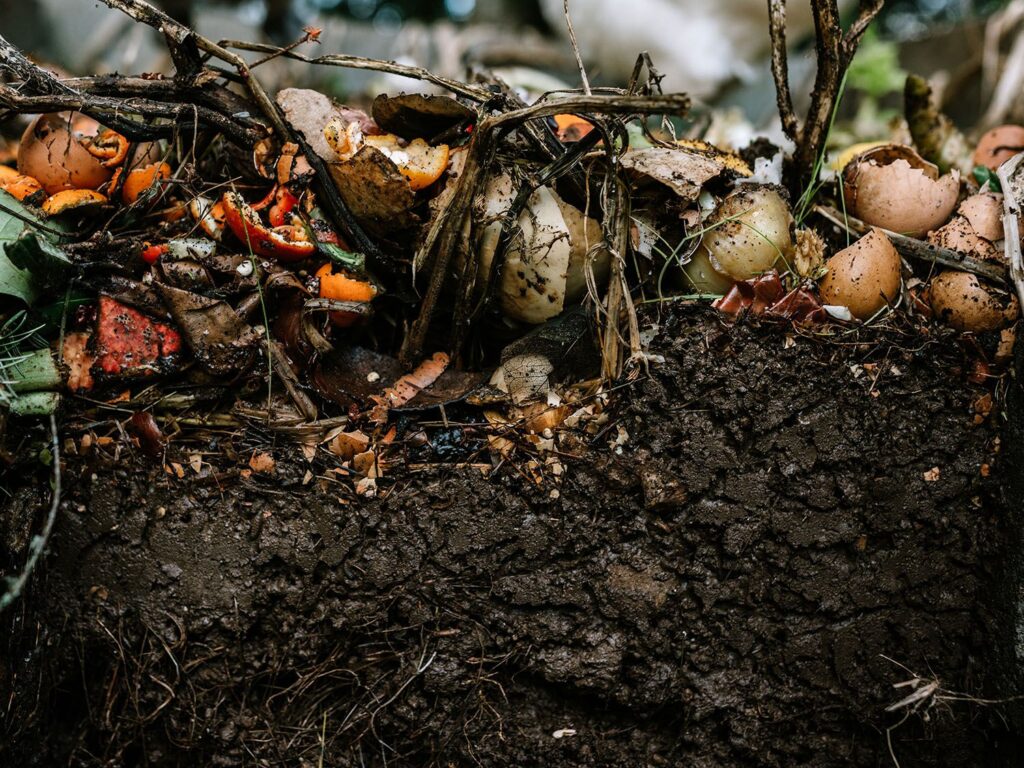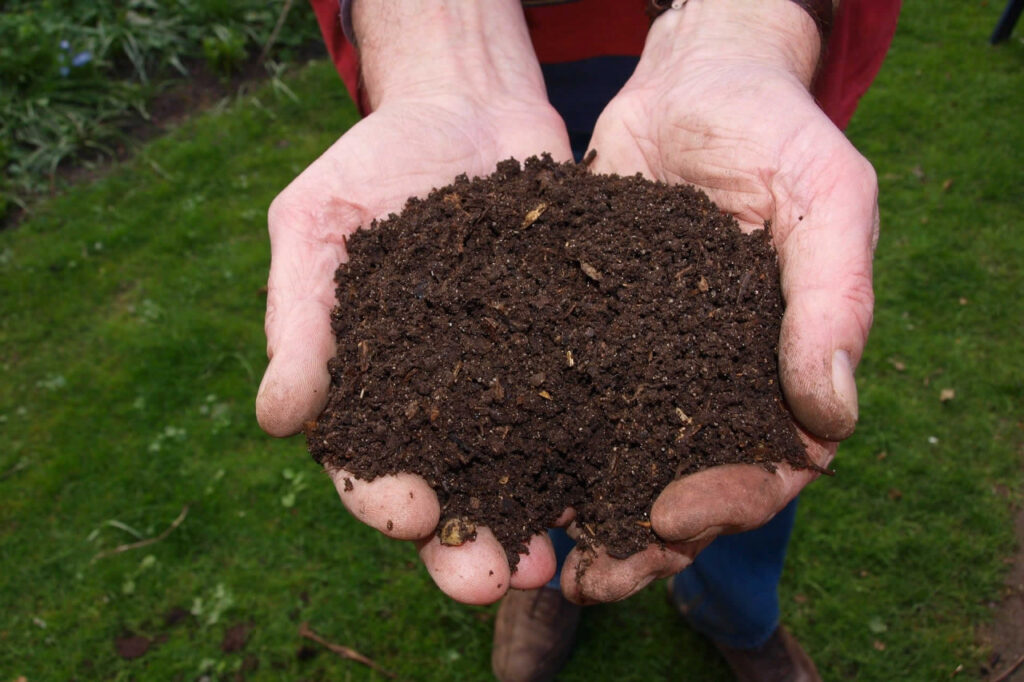You are already familiar with mulching your crops in the vegetable garden.
They help keep the soil moist in summer.
But you can go further by practicing surface composting, all year long.
This practice, a little confusing at first, will produce spectacular effects on your soil.
Once you’ve tried it, you won’t be able to do without it.

Contents
What is surface composting?
Quick answer #1: It’s not composting in a pile (in a composter).
Quick answer #2: It’s replicating what nature does.
In fact, it’s very simple: surface composting is depositing plant waste directly on the soil of your vegetable garden.
This vegetable waste will decompose on the spot, which will fertilize and improve the soil.
The same thing happens in nature: dry twigs and dead leaves decompose on the spot each winter. And in the spring, the plants grow back better and better, year after year.
When can I compost above ground?
You can do it all year round, and it is even recommended to keep the soil alive.
But there are two good times to start:
- after a crop: when the harvest of a vegetable is over (green beans, for example), instead of ripping out the stalks and discarding them, cut them flush with the ground and scatter them on site, after cutting them into smaller pieces if necessary.
- In the fall, prepare the garden for winter by covering all the garden plots with a mixture of dead leaves and other garden waste.
Don’t forget that every time you pick a vegetable (a leek, radishes), you can at the same time remove the parts you won’t eat (the green tips of the leek, the tops of the radishes) and put them back on the ground.
The 3 benefits of above ground composting
Keep a good soil for vegetable garden, rich in humus. If you complete the surface composting with a good layer of mulch in summer, it will not be necessary to add fertilizer to grow beautiful vegetables. The structure of the soil will improve and become lumpy and easy to grow.
The soil is seeded with micro-organisms that contribute to biodiversity, a natural balance is created and pest attacks and disease development are self-regulating.
Less work: the chore of cleaning up crop residues and removing weeds is over; everything is now cut up and left in place.
When should I avoid surface composting?
There are some situations where it is better not to do it:
- During the winter with very clayey soils, where it is better to sow a green manure mixture.
- At the beginning of spring to let the sun’s rays warm up the soil.
- For crops that do not like moisture (garlic, shallots and onions).
One important thing to know:
It is perfectly fine to use leftover plants affected by diseases (especially tomato blight) to cover the soil. Not all diseases survive the decomposition of dry material.
What to cover the soil with?

To find out what to compost with on the surface, there are many possibilities:
- after a harvest, cut up the stems of tomatoes, beans, peas, zucchini…
- all vegetable tops (beets, radishes, cabbage, carrots, lettuce). If you think it looks bad on the ground, cover it with another mulch!
- lawn clippings (in a thin dry layer)
- pulled weeds
- certain plants with interesting properties: nettle, comfrey, dill, borage…
- RCW (ramial fragmented wood): shredded shrubbery
- compost from your composter (yes!)
- And if you don’t have enough plant waste, grow it on site with green manure!
The thickness of the vegetation cover depends on the size of the plant debris:
- thin (2 to 3 cm) for fine, wet debris (lawn clippings),
- thick (up to 10 cm) for coarser debris (bean, squash, tomato stems).
Always make sure that the soil can breathe. Therefore, avoid mulches that are too dense or too thick.
And then, how to sow and plant?
After a few seasons of practicing surface composting, you should be able to greatly reduce the amount of tilling of your soil, as the soil will remain permanently loose, like the litter in a forest.
If this is not yet the case, you will simply aerate the soil with a spade fork or a grelinette. The goal is just to decompact the soil while disturbing as little as possible the life that has settled there.
To establish a new crop, prepare the plot as follows:
- spread the mulch in a corner with a rake (don’t be tempted to incorporate it into the soil, as the decomposition will mobilize bacteria and nitrogen, both of which are necessary for vegetable growth),
- proceed with seeding or planting,
- Replace the mulch between the rows, gradually so as not to smother the young vegetable shoots.

